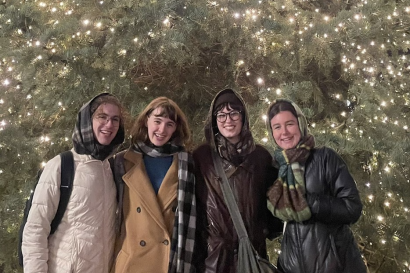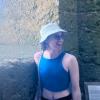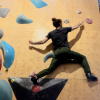From pieces on display in museums to graffiti-covered walls and doodle-filled pages of my notebook, my time in Berlin was filled with art. Some were meaningful because of their places within the history and culture of Berlin, while others are central to my memories abroad, and others are just interesting to look at. Scrolling through my photos from my time in Berlin, these five artworks stood out to me as particularly representative of my perspectives and experiences this semester.

I absolutely love museums, and went to about two per week throughout the program. Among the first museums I visited in Berlin was the Schwules Museum, where there was a really fantastic exhibition on the history of sex work and sex workers in Berlin. I went to the exhibit with a few new friends on the first ‘Museumssonntag,’ or Museum Sunday, of the semester, at which point we barely knew each other. It was really interesting to get to know one another by seeing which objects on display stood out to each person. This page taken out of a 1977 fable / manifesto really drew me in, and now that I’m home I’ve added the book to my library list.
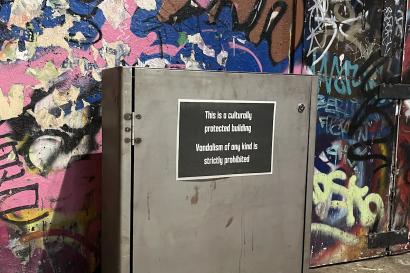
This is one of my favorite photos from my entire time abroad, and I think it really encapsulates some of the conflict and complexities surrounding art and space in Berlin. In one of my classes this semester, called “The Politics of Urban Space,” we spent a lot of time talking about the ways that creative subcultures in Berlin have been manipulated to benefit the city’s urban marketing; Berlin’s unique history has allowed those artistic movements to emerge and flourish, but more recent changes — such as the institutionalization of previously ‘underground’ spaces and communities — have shifted the cultures around those spaces. I took this photo at Fotografiska Berlin, which is a highly institutionalized contemporary art museum housed in what was previously called the ‘Kunsthaus Tacheles,’ where a large artist collective lived and worked from 1990–2012. The juxtaposition of the graffiti-covered walls and the English-language sign prohibiting vandalism, combined with the historical context of the location, struck me more than any intentionally displayed artwork in the museum.

My favorite museum in Berlin was the Berlinische Galerie, a modern art museum in Kreuzberg with some really fantastic special exhibits that kept drawing me back to the museum. This piece, though, was on display in the permanent exhibition up on the second floor of the museum, which follows art movements in Berlin from 1880–1980. I found the Dada gallery really interesting, as that is not a movement that I’d previously known much about. I ended up keeping an eye out for related pieces at other museums throughout the city, and developed an appreciation for styles and techniques associated with Dadaism, like photomontage.

This series, titled ‘Birkenau,’ was a part of the Gerhard Richter special exhibition at the Neue Nationalgalerie. It’s based on four photographs by Alberto Errera, a Greek, Jewish man who was interned and ultimately killed in the Auschwitz-Birkenau concentration camp and extermination center. Errera’s blurry, unfocused photographs were taken secretly and are the only known photos taken by a prisoner of the camp. They depict scenes by the gas chambers where prisoners were murdered, as well as an image from afar of bodies being burned in a pit. For ‘Birkenau,’ Richter — a white German man with family connections to the Nazi party — copied the images of the photographs into a large, painted format, and then, feeling that these were not his images to depict, he covered the paintings with abstract layers of dark yet multicolored paint. When considered in the context of the painting’s history and the photos that they are based on, ‘Birkenau’ reflects on the horrors of Germany’s Nazi past and the complex nature of representing that history. Through its multiple layers of paint and the placement of the paintings across from a dark, tinted mirror, ‘Birkenau’ explores the responsibility to remember, but the urge to forget.
I visited this exhibition with two friends, and we spent a lot of time discussing our interpretations of the series, our thoughts on its presentation, and the great meaning that it holds within historical and contemporary memory cultures in Berlin. Especially as a Jewish person who sought out Jewish spaces in Berlin, my time abroad was filled with critical and unique conversations about the Holocaust and Holocaust memory in Germany. With all of those discussions, though, I thought that our casual reflection on ‘Birkenau’ at the Neue Nationalgalerie was one of my most memorable and influential opportunities to analyze this part of German culture and my own experience in Berlin.

My go-to activity for long, solo train and bus rides is to listen to music, look out the window, and doodle in my notebook when it gets too dark to see outside. This particular page was drawn on the bus ride back from Prague. Looking back at my notebook from the semester, most of the pages look something like this — a combination of doodles, recipes, to-do lists, and the occasional pasted-in entrance ticket or photo booth photo. I am really glad that I kept my notebook filled throughout the semester. Even my random doodles are attached to some really lovely memories, and I think I’ll be happy to have them all to look at and remember my time abroad.
This has been an incredibly special semester, filled with all kinds of beautiful things — art and travel and friendships and finding community and learning. Whether in my notebook, my photo gallery, or my blog posts, I’ve been glad to have the opportunity to save some of those beautiful things, and share them, too.
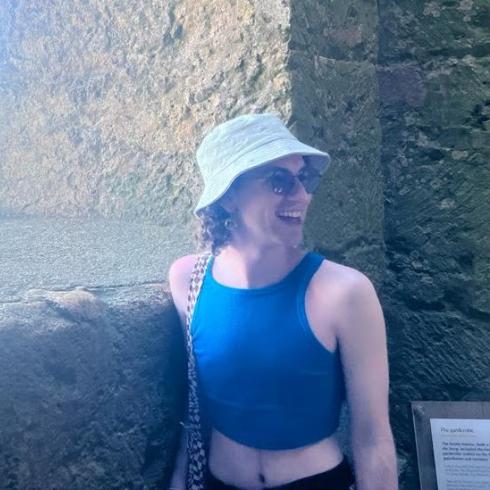
Tal Pemstein
Tal Pemstein (they/them) is a junior at Brandeis University, in Waltham, Massachusetts. They love reading, bouldering, playing Bananagrams, and exploring museums!

